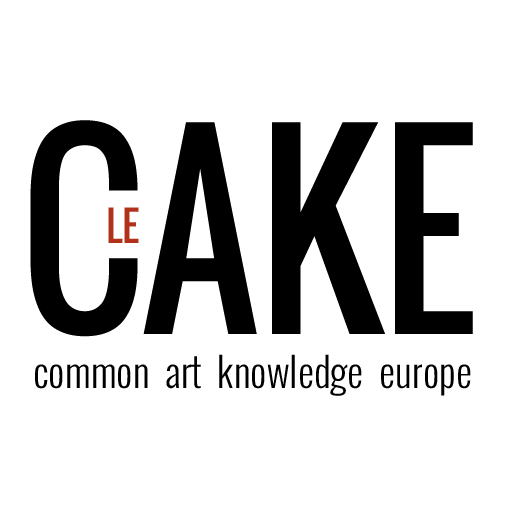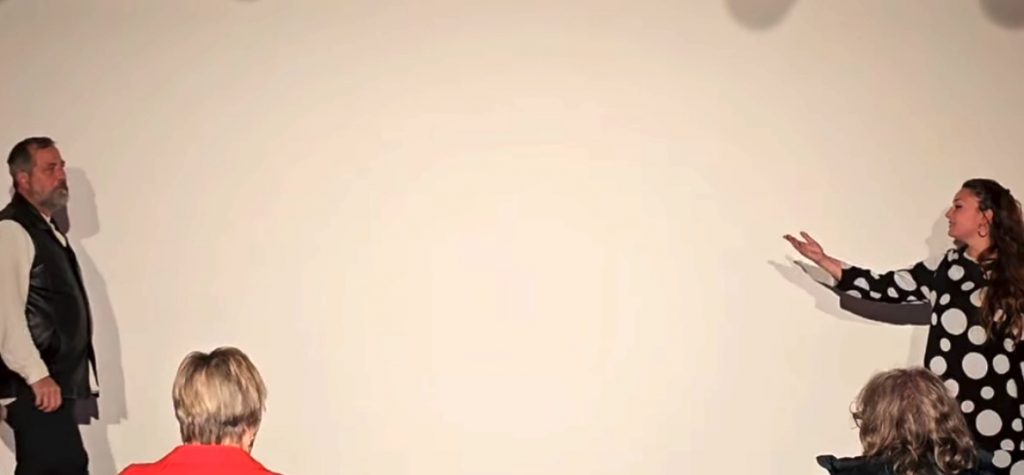Imagine and stage a work demonstration inspired by the theme of environmental sustainability
THE INSPIRING RESEARCHES
RESEARCH; PHYSICS
We are talking about a demonstration of work rather than a performance, because here we can see a clear reference to a certain methodological approach not devoid of technical/scientific aspects, both in the physical and psychological fields which come together in the dynamic artistic fact.
The reference, for example, to the physicist Niels Bohr is clear.
Complementarity is Bohr’s great philosophical contribution to the philosophy of science. He considered it as the expression of a deeper level of truth. The connections of this thought with Taoist philosophy are evident and not casual. To the point that, when he was awarded the Order of the Elephant in 1947, Bohr chose the t’ai-chi diagram, the black and white circle representing the complementarity of yin and yang, as his heraldic coat of arms, and as his motto «CONTRARIA SUNT COMPLEMENTA”.
If we address a group of very young students so that the scientific, physical approach is as interesting as that of the fantastic narration. So it was decided to show some exercises on the work of the actor in which we can use these double images as a stimulus for a work process, both physical and vocal.
Moving quickly through the work of the Japanese actor, a cold work, based on tensions and directions, to be more effective we introduced, from a technical point of view, the comparison between the work of the actor and the work of the athlete.
A footballer, before kicking a penalty in front of 100,000 people must be cold and make a decision to give a trajectory to the ball but at the same time he is under a pressure that is revealed through sweat, in short the “heat” of the situation, the same goes for a tennis player, a volleyball player, etc.
This shift between theater and sport is fundamental, we speak a theatrical language that could be too refined for young listeners and we try to find equivalences to be effective and bring inside.
RESEARCH; THEATRICAL ANTHROPOLOGY
Theatrical anthropology is cited here to specify a precise method of sharing between the actor, i.e. who performs actions, and the audience who participates in this work, demonstrative work in this case and not spectacular.
Theatrical anthropology is therefore understood in a scientific sense, according to the arguments proposed by Eugenio Barba, director of the Odin Teatret, who for about 50 years has proposed the name of theatrical anthropology for this science.
Our Hot&Cold demonstration has in its first half a reflection on the value of this pair of opposites in the physical and vocal training of the performer.
We are talking about a pre-expressive level, in which the actor, the agent, only expresses his presence by being inspired by something, by being inspired by pairs of oppositions.
Among these
1) the alteration of the balance
2) the dynamics of the oppositions
3) the use of inconsistent coherence
The discussion, the stimulus proposed to young students in the morning and to adults in the afternoon naturally fell mainly on the second of these rules, that is, the dynamics of the oppositions between hot and cold.
By using a vocal or physical flow that I do not share in meaning with the audience, I can orient and demonstrate how the “hot” image influences that flow and how from that image the flow can quickly or slowly turn into its “cold” opposite.
This is understandable beyond linguistic differences and therefore effective in this type of shared international experience.
RESEARCH ON THE TERRITORY
For Gelsenkirchen we studied in the frame of Le Cake, relation between human beings and the environment, and using this frame for setting a good example of relation in our territory (Rieti, center of Italy) and tried as much as possible to identify a company, a factory, that was particularly involved in the ecological transition.
We found the work of the FREEZCO company to be very attentive to the ecological transition and in particular to decarbonisation. FREEZCO was born from the resourcefulness of Emanuele and Antonio, entrepreneurs from the world of cocktail bars, and from the peculiarities of their homeland, Rieti, the “City of water” par excellence. The desire for innovation and the constant search for quality and attention to the environment, in particular to decarbonisation have characterized all their professional activity.
ATTENTION TO THE ENVIRONMENT They have significantly reduced Co2 emissions and thanks to the solar panels installed on the factory they are 70% self-sufficient in the use of electricity”.
The ice actors
1) For children, using the audio tracks from the Frozen video for sound and dialogue
2) For adults, using for sound and dialogue the audio tracks of a famous staging of Amleth by an important German production

Development of the demonstration of work
The starting point of the work was how to identify an originality and a peculiarity of the theme of environmental sustainability and the reduction of CO2 dispersion in the air.
Even in the awareness of having to create an artistic material, the starting stimulus was to look for a company in our area that paid great attention to the environment.
We found it in the Freezco company which produces ice and has very low CO2 emissions, and produces 70% of the energy necessary for the transformation thanks to its solar panels.
The first idea was to have them tell us about their experience, a reality that is being born precisely by setting up the project to receive funding in relation to the ability to commit and find solutions for environmental sustainability. Reflecting on this sort of documentary, made of interviews and shots we wanted to make a document to project inside our theatrical event to build in parallel.
So we interviewed the owner and manager, the employees, and we had them show us the work processes.
At the end of the shooting we took some ice cubes to take high resolution photos, we put the ice cubes on an aluminum table with wheels and we realized that the cubes, due to the lack of friction created by the water that formed at the base, we were in a room at 14 degrees, moved with a certain autonomy.
We then began to push them, from outside the shooting margins of the camera and we shot these random sequences of movements.
To do this we recorded an artistic video based on ice, the cubes became a sort of characters that we could use in an innovative cinematographic technique.
In a later phase a first editing was done on which Shostakovich’s Waltz No. 2 was put as a soundtrack, then other music and other video editing… and we brought 3/4 video with us.
When we arrived in Gelsenkirchen we realized that it would be even more effective if we could to overlap dialogues on the movements of the cubes, so we chose an excerpt from the film Frozen in a German version for the children and an excerpt from a production of Hamlet in a German version for the adults.
Then also in Gelsenkirchen we translated their work process into the actor’s work process, we were inspired by that process to reanalyze the actor’s technical and artistic work.
We then worked in two ways.
- A) Video to be used as a final chapter in the work demonstation
- A) Create a work demonstration that was inspired by the hot/cold duality; solar panels to produce ice. We found similarities between the theatrical work and these two images.
This allowed us to show technical, physical and vocal work inspired by Japanese theatrical art technically based on this contradiction.
The anthropological research work of the Rigodon theater which uses images to inspire the actor’s work, not psychological issues but suggestive and contrasting images.
Then we showed examples of physical and vocal action borrowed from our training to show the actor’s work inspired by hot/cold suggestions.
Then we showed scenes from famous theater texts to show how technical work on hot/cold images could be used to construct theatrical representations.
An Italian folk song:
Richard the Third. First monologue:
Italian opera “Stride la vampa”:
- The result of this demonstration of work was to show how starting from an environmental issue and the respect that new Italian companies show towards the environment it could be used for creative work, an inspiration for theatrical work that could be an effective means to help understand the effort of the third sector and in particular of the theater to help convey important information on the fight against climate change.
The positive and interested reaction of children and adults has shown us that this work is not only possible but necessary for the cause, to directly bring the public closer to environmental issues, the 2030 Agenda, and the importance of attention to the environment for individuals and institutions.
We translated the work process of the Freezco Factory (hot for cold and vice versa) into the actor’s work process.
We were inspired by that process to reanalyze the actor’s technical and artistic work.

